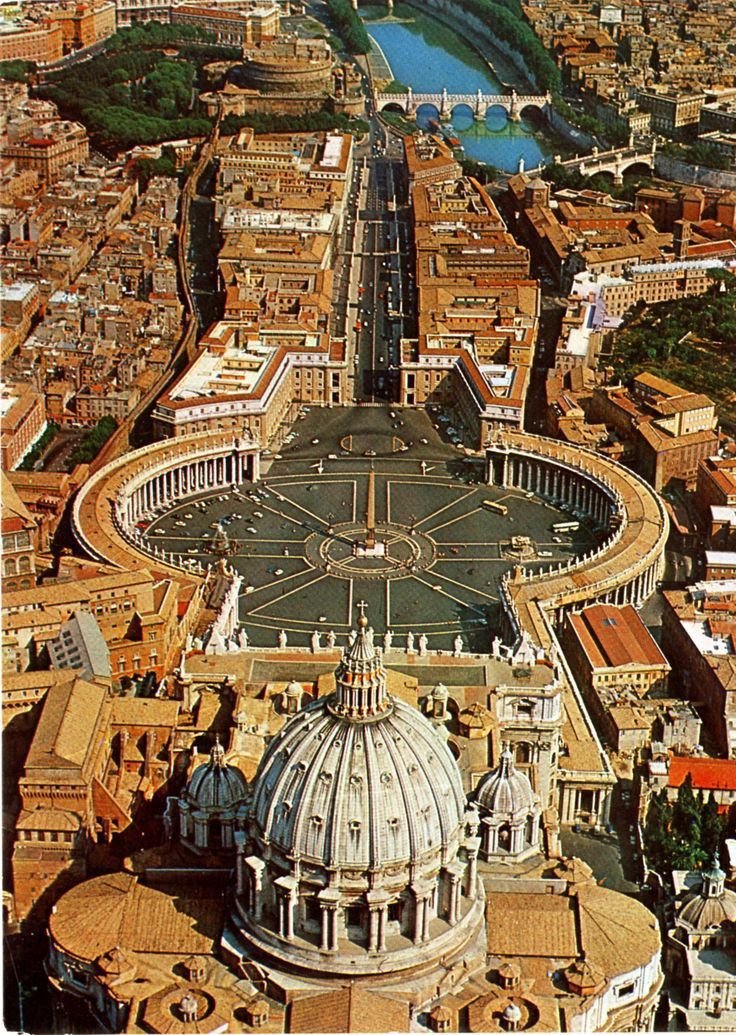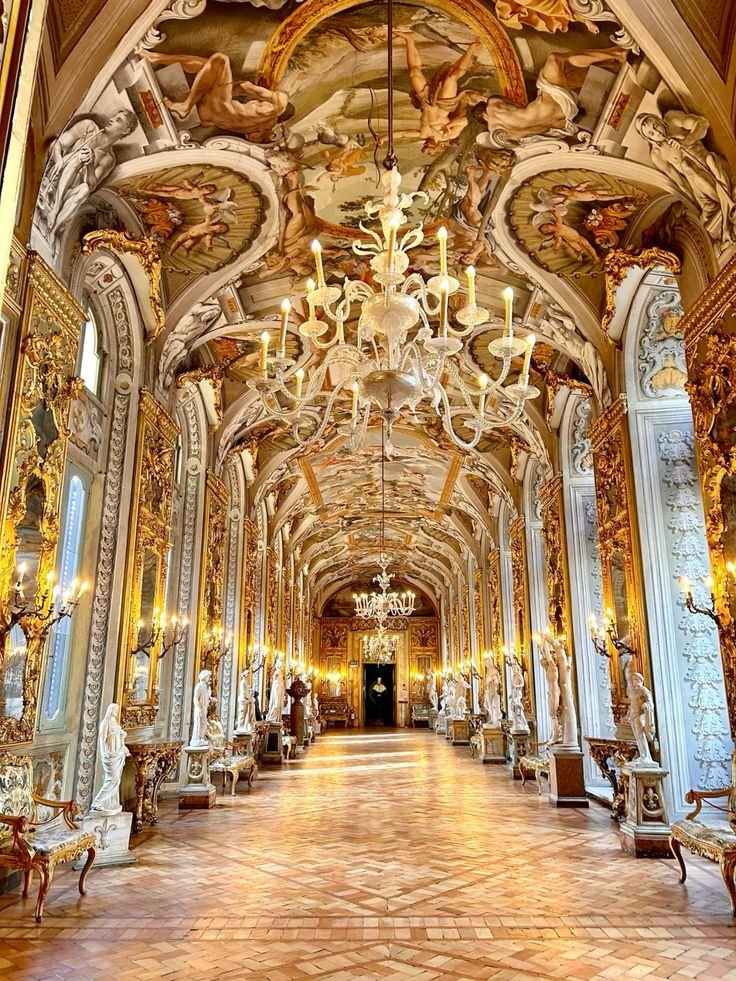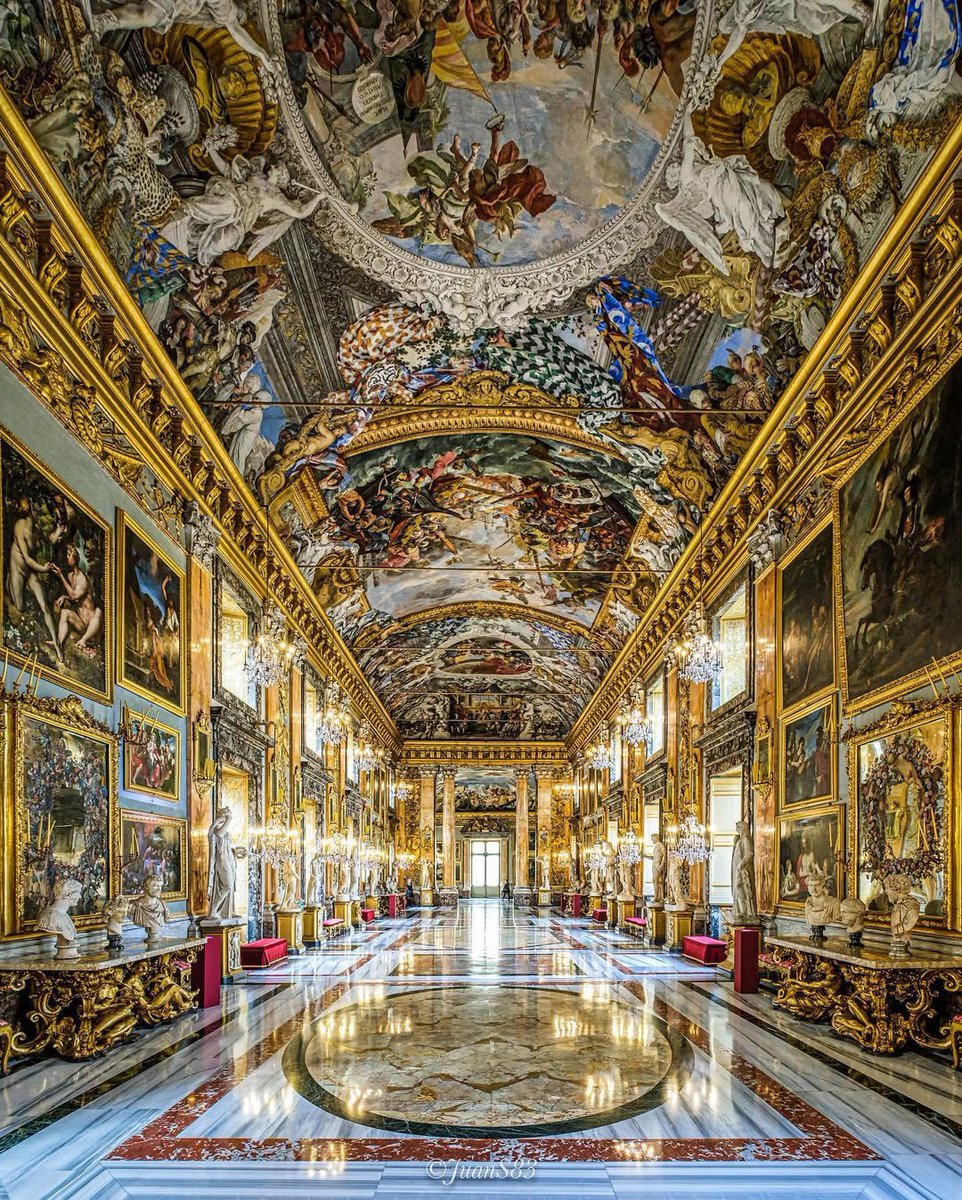Armor wasn't just about survival.
It was propaganda in steel.
Each suit told the world who you were — warrior, emperor, legend.
Here are some of the most jaw-dropping historical armors ever made.
Including one (#10) that terrified before the battle even began. 🧵👇
It was propaganda in steel.
Each suit told the world who you were — warrior, emperor, legend.
Here are some of the most jaw-dropping historical armors ever made.
Including one (#10) that terrified before the battle even began. 🧵👇
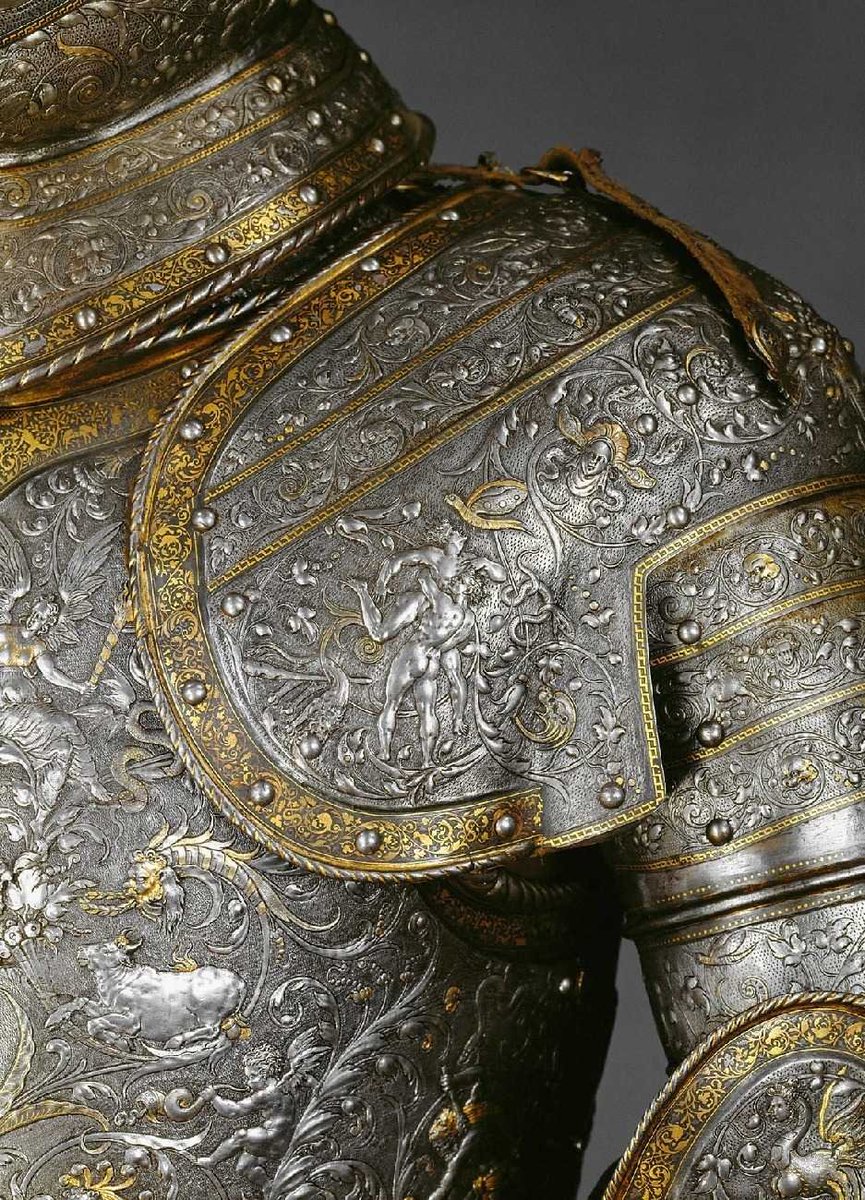
1. Armor of Grand Marshal Nikolaus IV Radziwill (c. 1555)
Polished, powerful, and intimidating.
This Lithuanian noble wore his armor like a crown.
Polished, powerful, and intimidating.
This Lithuanian noble wore his armor like a crown.
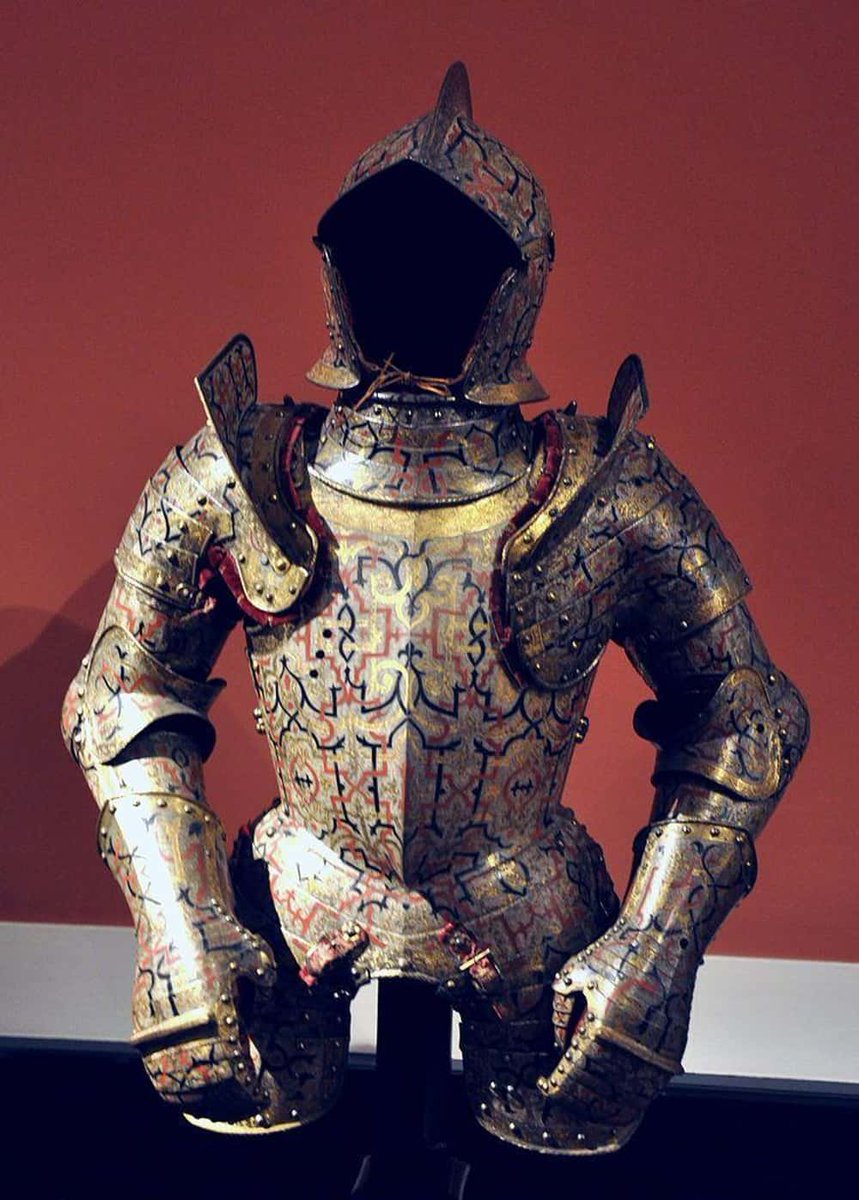
2. Gothic Armor by Lorenz Helmschmied (c. 1500)
Elegant curves. Razor articulation.
This was armor as sculpture made to flow with the human body like a second skin.
Elegant curves. Razor articulation.
This was armor as sculpture made to flow with the human body like a second skin.

3. Cuirassier’s Armor in Savoyard Style (1600–1610)
Made for heavy cavalry, meant to charge, not dodge.
Thick, terrifying, and sometimes with a monster mask visor.
Made for heavy cavalry, meant to charge, not dodge.
Thick, terrifying, and sometimes with a monster mask visor.

4. Parade Armor of Henry II of France (c. 1555)
Gold, etched steel, and a lion’s head on the gauntlet.
This armor wasn’t for war. It was for awe. And it delivered.
Gold, etched steel, and a lion’s head on the gauntlet.
This armor wasn’t for war. It was for awe. And it delivered.

5. Tibetan Cavalry Armor (18th–19th c.)
Leather, iron, and wool made for high-altitude warfare.
Sparse but effective, it mixed mobility with spiritual symbolism.
Leather, iron, and wool made for high-altitude warfare.
Sparse but effective, it mixed mobility with spiritual symbolism.

6. Hercules Armor of Maximilian II (1555)
Etched with scenes of Hercules because why just wear armor when you can wear myth?
This wasn’t subtle. It was legacy.


Etched with scenes of Hercules because why just wear armor when you can wear myth?
This wasn’t subtle. It was legacy.



7. Islamic Cataphract Armor (1450–1550)
Horse and rider armored head-to-hoof.
Iron scales layered like dragon skin perfect for a cavalry charge that shattered lines.
Horse and rider armored head-to-hoof.
Iron scales layered like dragon skin perfect for a cavalry charge that shattered lines.

8. Byzantine Armor (10th–12th c.)
Functional, disciplined, and built for the empire that outlived Rome.
Chainmail, lamellar, and scale over padded tunics made to last, just like Byzantium.
Functional, disciplined, and built for the empire that outlived Rome.
Chainmail, lamellar, and scale over padded tunics made to last, just like Byzantium.

9. Armor of Sultan Mustafa III (18th c.)
Ottoman elegance in steel form.
Lined with silk, curved with beauty, a sultan’s armor for ceremony, not slaughter.
Ottoman elegance in steel form.
Lined with silk, curved with beauty, a sultan’s armor for ceremony, not slaughter.

10. Maximilian Field Armor with Grotesque Mask (1510s)
Yes, that’s a face on the helmet.
This wasn’t for function. It was psychological warfare.
Yes, that’s a face on the helmet.
This wasn’t for function. It was psychological warfare.

And if you love threads on history, culture, and power, subscribe to The Culture Explorer
newsletter.thecultureexplorer.com/subscribe
newsletter.thecultureexplorer.com/subscribe

11. Japanese Karuta Armor (17th–18th c.)
Karuta means "cards" because the armor was made from small square plates.
It offered flexibility, style, and protection in equal parts.
Karuta means "cards" because the armor was made from small square plates.
It offered flexibility, style, and protection in equal parts.

12. Moro Armor of the Philippines (19th c.)
Worn by Muslim warriors in Mindanao.
Made of brass, rattan, and cotton — flexible, fast, and handmade for jungle warfare.
Worn by Muslim warriors in Mindanao.
Made of brass, rattan, and cotton — flexible, fast, and handmade for jungle warfare.

13. Parade Armor of Erik XIV of Sweden (c. 1562)
Gold-drenched and meant to stun.
No one ignored Erik when he walked in wearing this.
Gold-drenched and meant to stun.
No one ignored Erik when he walked in wearing this.

14. Armor Designed for the German Kolbenturnier Games (c. 1480s)
Built for brutal tournaments with clubs, not swords.
Chunky, solid, and full of dents. This was battle sport gear.
Built for brutal tournaments with clubs, not swords.
Chunky, solid, and full of dents. This was battle sport gear.

15. Ottoman Mirror Armor (15th–16th c.)
A warrior’s torso became a wall of polished steel discs.
It caught blades, reflected light, and showed rank.
A warrior’s torso became a wall of polished steel discs.
It caught blades, reflected light, and showed rank.

16. Winged Armor of the Polish Hussars (Early 17th c.)
They didn’t just charge. They thundered.
Two massive wings mounted to their backs created a rustling roar terrifying to enemy horses and men alike.
This was cavalry designed to break you before contact.
They didn’t just charge. They thundered.
Two massive wings mounted to their backs created a rustling roar terrifying to enemy horses and men alike.
This was cavalry designed to break you before contact.

17. Chainmail Bulletproof Vest from WWI
Yes, they tried chainmail in the 20th century.
It didn’t work well against bullets, but it did show how ancient ideas linger.
Yes, they tried chainmail in the 20th century.
It didn’t work well against bullets, but it did show how ancient ideas linger.

18. Japanese Gusoku Armor (19th c.)
Built for intimidation. Polished iron plates layered silk cords, and a menpō mask turning samurai into war gods.
This wasn’t just defense. It was theater.
Built for intimidation. Polished iron plates layered silk cords, and a menpō mask turning samurai into war gods.
This wasn’t just defense. It was theater.

19. Field Armor of King Henry VIII of England (c. 1544)
Massive, overbuilt, and custom-fit for a king in decline.
Henry had gout and was overweight, but his armor still screamed: Don’t mess with me.
Massive, overbuilt, and custom-fit for a king in decline.
Henry had gout and was overweight, but his armor still screamed: Don’t mess with me.

20. Italian Infantry Armor (1571)
Worn by foot soldiers during the rise of firearms.
The design shrunk but thickened — a response to bullets and grenades.
Worn by foot soldiers during the rise of firearms.
The design shrunk but thickened — a response to bullets and grenades.

Armor is more than metal.
It’s legacy, propaganda, and identity forged in fire.
Which one of these would you wear into battle — or display in your hall?
It’s legacy, propaganda, and identity forged in fire.
Which one of these would you wear into battle — or display in your hall?

• • •
Missing some Tweet in this thread? You can try to
force a refresh


